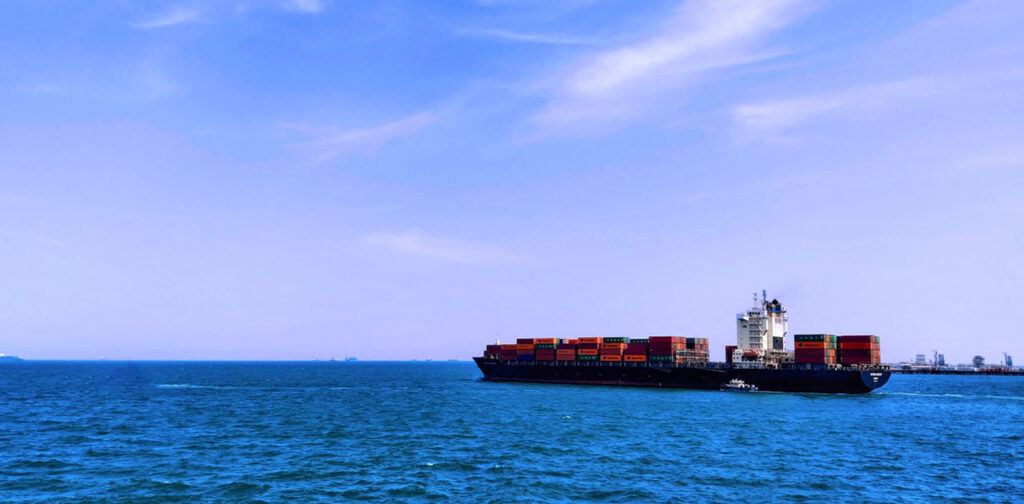Maritime transportation is responsible for over 80% of all goods traded globally but also causing close to 3% of greenhouse gas emissions (Hobley et.al. 2021). The reason is that fossil-based fuels have been the dominant choice for the industry since 1960 (Desjardin 2018). If the global population keeps growing, together with the number of middle-class consumers, more and more transportation vessels would be crossing the oceans in the future. Therefore, all possible actions need to be evaluated to support the decarbonization of the shipping industry.

One important step has already been taken by the International Maritime Organization (IMO), who has adopted a strategy that aims to halve the shipping GHG emissions by 2050, compared with 2008 levels (IMO 2018). This goal is very ambitious, considering that fuel in the shipping industry can account for about half of the vessel’s operating costs. Since the transition to green fuel is relatively expensive, the sector needs to find effective ways to minimize the carbon footprint of its operations at long-term. Strict legislative proposals have been also pushing industrial players to act more seriously before damages to the global environment become irreparable.
Greener options, yet expensive
Many alternative fuels have been on the radar to decarbonize the ships, which also include the so-called e-fuels. In this concept, renewable electricity is used to split water into hydrogen and oxygen through a process called electrolysis. The hydrogen can further react with nitrogen or CO2 to produce e-ammonia or e-methanol, respectively. In theory, CO2 could be captured from several industrial processes at large scale, although improvements are required to make the overall production of e-fuels more competitive against conventional fossil-based fuels.
![[Alt text: windmills functioning and sun shining.]](https://blogit.lab.fi/labfocus/wp-content/uploads/sites/8/2023/01/19_2023_Maritime-transport-goes-green_2-1024x570.jpg)
Cooperation to gain competitiveness
The establishment of industrial synergies, directly or indirectly, could enable the expansion of a new fuel market. As long as the production of e-fuels makes technical and economic sense, CO2 could be captured and supplied by industrial carbon emitters. Nevertheless, it is important to consider a scenario where multiple fuels will be available to truly enable the decarbonization of the shipping industry. These fuels could be produced in different geographic locations, through different processes, using different feedstocks (Hamaguchi 2022).
The establishment of industrial synergies, directly or indirectly, could enable the creation of a new fuel market, e.g., e-methanol or e-methane. As long as the production of large volumes of e-fuels makes technical and economic sense for industrial carbon emitters, the supply of captured CO2 would not be a challenge, at least volume wise. Based on calculations by Mankonen et al. (2022), around 150 million tons of CO2 would be already enough to produce 110 million tons of e-methanol, which could account for about 25% of the total maritime fuel by 2050 (MI 2021).
Authors
Marcelo Hamaguchi, D.Sc. (Tech), MBA with experience in sustainable industrial development.
Anu Kurvinen works as senior lecturer and project specialist at LAB University of Applied Sciences.
References
Capt_M. 2020. Aly, M. Konttialusten, alus, viedä. Pixabay. Cited 5 Dec 2022. Available at https://pixabay.com/fi/photos/konttialusten-alus-vied%c3%a4-4989914/
Desjardins, J. 2018. World Economic Forum. Why the future of shipping is looking green and autonomous. Cited 11 Nov 2022. Available at https://www.weforum.org/agenda/2018/01/why-the-future-of-shipping-is-looking-green-and-autonomous
Hamaguchi, M. 2022. Potential synergies between industrial carbon emitters and the maritime transportation sector: a path towards decarbonization. Thesis. LAB University of Applied Sciences, Master of Business Administration, International Business Management. Cited 23 Dec 2022. Available at https://urn.fi/URN:NBN:fi:amk-2022121630517
Hobley, A.R. et al. 2021. World Economic Forum. To reach net zero, the shipping sector needs political support. Cited 23 Nov 2022. Available at https://www.weforum.org/agenda/2021/10/decarbonize-shipping-sector-needs-political-support/.
IMO. 2018. Initial IMO Strategy on reduction of GHG emissions from ships. Cited 25 Nov 2022. Available at https://www.imo.org/en/MediaCentre/PressBriefings/Pages/06GHGinitialstrategy.aspx
Mankonen, A. et al. 2022. Vety-/metanolitalous – Ekosysteemimallinnus, case Puhos. LUT Scientific and Expertise Publications. Tutkimusraportit – Research Reports, vol. 141.
MI. 2021. Methanol: An emerging marine fuel. Methanol Institute. Cited 26 Nov 2022. Available at https://www.methanol.org/wp-content/uploads/2021/10/Methanol-Future-Proof-Marine-Fuel-Oct-2021.pdf
Zoltanek. 2018. Balog, Z. Sähkön, energiaa, auringonlasku. Pixabay. Cited 6 Dec 2022. Available at https://pixabay.com/fi/photos/s%c3%a4hk%c3%b6n-energiaa-auringonlasku-3241568/




